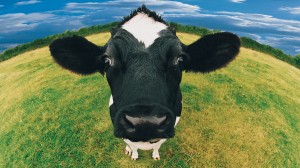Recently, two studies were done to test the spatial memory of cattle.  In one study, six heifers were trained in mazes. The mazes were radial and parallel arm mazes in two levels of difficulty. Grain was placed at the end of each maze then the heifers were individually released and allowed to choose their route freely until all the grain was gone.
In one study, six heifers were trained in mazes. The mazes were radial and parallel arm mazes in two levels of difficulty. Grain was placed at the end of each maze then the heifers were individually released and allowed to choose their route freely until all the grain was gone.
When a heifer entered a previously entered arm, the choice was considered incorrect. When they tried the four arm level, the average of correct choices in the first four tries were 3.83 and 3.6 for the radial and parallel mazes, respectively. When they were put in at the eight arm level, the average correct choices in the first eight tries were 7.78 and 7.36, respectively. This shows that the heifers were a little more efficient in the radial maze where directional and distal cues were more pronounced.
In the second study, two sets of twin steers were trained in a radial-arm maze using similar procedures as the first study. The average number of correct choices in the first eight entrances was 7.68. A interval of delay was then placed between choices four and five. The steers rarely made any errors when the delay was between five minutes and four hours. After an eight hour delay, performance dropped slightly. After a twelve hour delay, it dropped dramatically. The average number of correct choices in the first eight entrances were 7.63, 7.29, and 5.8 for delays of four hours, eight hours, and twelve hours, respectively. The study concludes that cattle have the ability to associate many locations with food resources and to remember those locations for periods of up to eight hours.